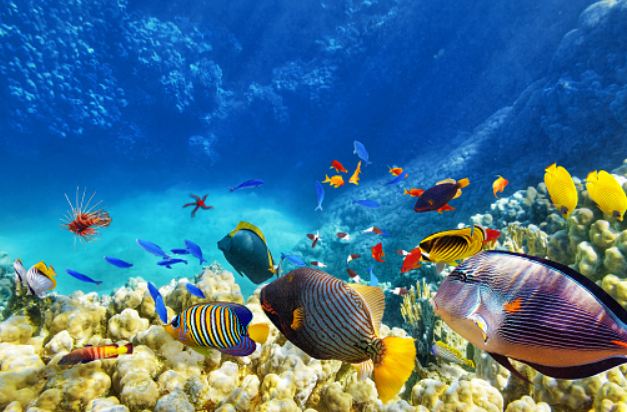Are you interested in starting your own aquarium for tropical fish? Observing a colorful aquarium of fish is both interesting and relaxing. Doctor’s offices are well known for featuring aquariums to provide a means of distraction for waiting patients and to reduce stress.
Perhaps you’ve been admiring some extraordinary aquariums yourself and imagined how restful it would be to watch the swaying plants, gentle dancing of the fish, and glistening reflections of the water.
Before you invest a large amount of money, here’s what you should know so you can enjoy your fish for a long time.
CREATING THE PROPER ENVIRONMENT
While tropical fish are captivating and restful to watch, you may find your first attempts at keeping fish to be fraught with complications.
Cleaning the tanks, proper feeding, and selection of tank mates can all be causes of frustration that may lead to illness or dying fish and feelings of guilt or anxiety.
Choosing the right aquarium and companions for your fish is crucial in creating a stable environment. Some fish are naturally aggressive and will bite or even eat their tank companions.
Ask about your selection at the store or research your chosen fish to determine what size of tank it needs and what types of fish it can live with.
Don’t give in to the temptation to overstock your aquarium. Some fish may live peaceably with others only when they have room to move and claim territory.
Too many fish will also create extra waste which will lead to a polluted environment causing disease and death.
Learning about the proper environments for tropical fish is the first step in creating a long-lasting aquarium.
FEEDING YOUR FISH
The simplest way to keep fish healthy is by providing a clean environment for them. Uneaten food particles and fish waste create a toxic environment that can cause disease and death.
Overfeeding of fish is a common problem. Uneaten food and waste products will cause ammonia to build up in the water. Using foods that float near the surface allows you to observe the feeding habits of your fish.
Feeding them only what they can eat in several minutes (before food begins to sink) is optimal. Several small meals will lead to less contamination of the water.
Overfeeding will cause excess waste products which will contaminate the water leading to more frequent cleaning of the tank or illness to your fish.
TANK WATER
Water from your tap can contain chemicals like chlorine which can harm your fish. When starting a tank it is recommended by some fish specialists to use bottled water only.
You can also purchase water cleansing products to detoxify your tap water when cleaning the tank and replacing tank water.
A properly established tank will develop an eco-system that will naturally breakdown toxins and permit healthy bacteria to develop. It is important to keep this system alive by not removing all of the tank water during cleanings.
Your fish will do well with only 20-30% of the water being removed and exchanged every week.
While the green algae that grow on the tank may not harm your fish you may wish to remove it during cleanings or take steps to reduce build-up such as keeping your tank away from too much sunlight, which encourages growth and adding algae eating creatures to your aquarium.
START SMALL
New fish owners may consider starting with only one fish, such as a betta, which does well by itself in a simple one-gallon bowl, without the costly setup of a heated aquarium.
Learning how to care for a relatively hardy, but beautiful, tropical fish like this will allow you to learn about the care and needs of fish before investing a lot of time and money.
A simple setup like this is ideal for children, the elderly, or those who simply want to enjoy the natural beauty without the effort. Whatever you decide, learning to care for your fish will give you healthier pets that are a joy to behold!

